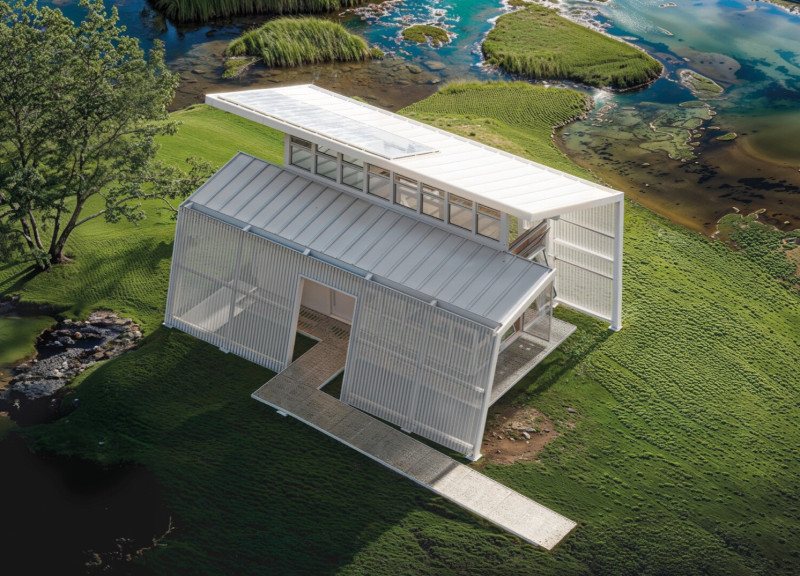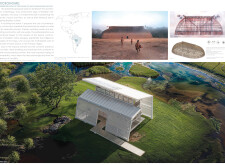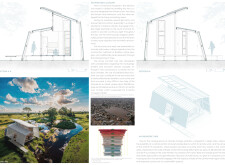5 key facts about this project
### Project Overview
The Microhome project reinterprets the traditional housing of Brazil's indigenous peoples, specifically the Xingu communities in northeastern Mato Grosso, within the Amazon region. The initiative aims to align contemporary construction techniques with indigenous architectural principles, focusing on sustainability and the preservation of cultural heritage. In addressing the challenges of climate change and urbanization, Microhome presents a compact residential solution that effectively responds to environmental conditions and social needs.
### Architectural Form and Function
The design of the Microhome features a distinctive layout that is divided into two primary sections: an infrastructure area containing essential utilities such as the kitchen and bathroom, and a living space. This arrangement enhances privacy and functional versatility, allowing various activities to occur concurrently. The structure incorporates larger openings on the southern and eastern elevations to optimize natural light penetration. Additionally, the slanted roof design serves to enhance light entry while facilitating efficient rainwater runoff, which is particularly vital in this region's climate, characterized by frequent heavy rainfall.
### Material Selection and Sustainability
The choice of materials plays a crucial role in merging traditional and modern elements. Key structural components include Kingspan insulated trapezoidal roof panels for thermal comfort, Kingspan SmartWall panels for external walls providing insulation and stability, and double-glazed windows that improve thermal performance. The exterior features a light steel frame structure for durability and a concrete block foundation to ensure stability in humid conditions. Sustainability is further emphasized through innovative systems such as rainwater harvesting, which reduces reliance on external water sources, and a biodegradable waste treatment system that processes waste effectively. Cross-ventilation techniques are integrated into the design to promote natural airflow, decreasing the need for mechanical cooling solutions.






















































